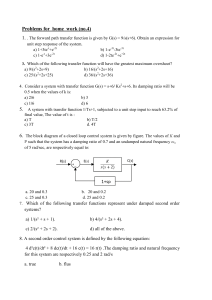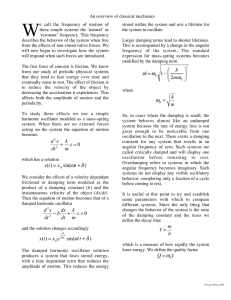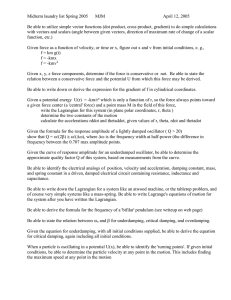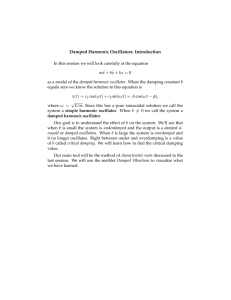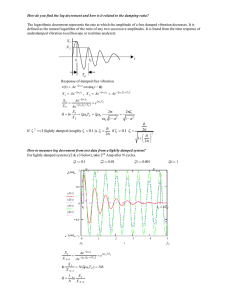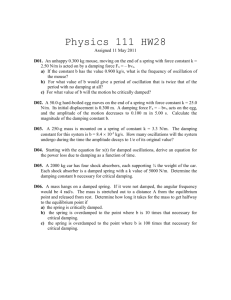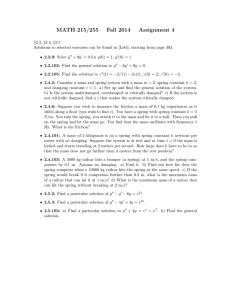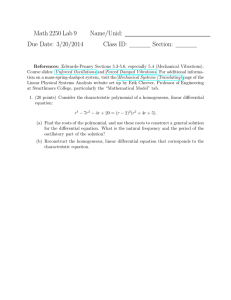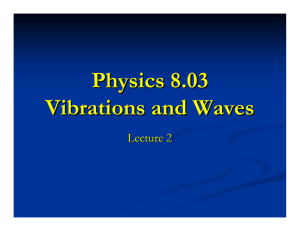Math 2250, Lab 9 Extra Credit
advertisement
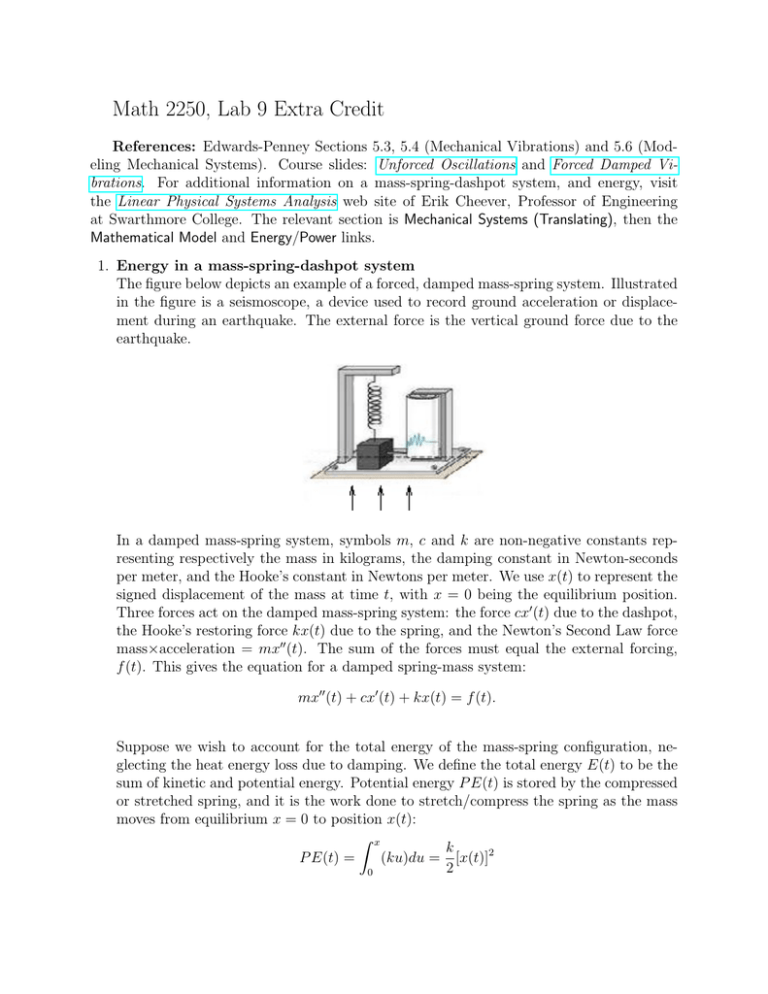
Math 2250, Lab 9 Extra Credit References: Edwards-Penney Sections 5.3, 5.4 (Mechanical Vibrations) and 5.6 (Modeling Mechanical Systems). Course slides: Unforced Oscillations and Forced Damped Vibrations. For additional information on a mass-spring-dashpot system, and energy, visit the Linear Physical Systems Analysis web site of Erik Cheever, Professor of Engineering at Swarthmore College. The relevant section is Mechanical Systems (Translating), then the Mathematical Model and Energy/Power links. 1. Energy in a mass-spring-dashpot system The figure below depicts an example of a forced, damped mass-spring system. Illustrated in the figure is a seismoscope, a device used to record ground acceleration or displacement during an earthquake. The external force is the vertical ground force due to the earthquake. In a damped mass-spring system, symbols m, c and k are non-negative constants representing respectively the mass in kilograms, the damping constant in Newton-seconds per meter, and the Hooke’s constant in Newtons per meter. We use x(t) to represent the signed displacement of the mass at time t, with x = 0 being the equilibrium position. Three forces act on the damped mass-spring system: the force cx0 (t) due to the dashpot, the Hooke’s restoring force kx(t) due to the spring, and the Newton’s Second Law force mass×acceleration = mx00 (t). The sum of the forces must equal the external forcing, f (t). This gives the equation for a damped spring-mass system: mx00 (t) + cx0 (t) + kx(t) = f (t). Suppose we wish to account for the total energy of the mass-spring configuration, neglecting the heat energy loss due to damping. We define the total energy E(t) to be the sum of kinetic and potential energy. Potential energy P E(t) is stored by the compressed or stretched spring, and it is the work done to stretch/compress the spring as the mass moves from equilibrium x = 0 to position x(t): Z x k P E(t) = (ku)du = [x(t)]2 2 0 Kinetic energy for translation of a mass m with velocity v(t) = x0 (t) is given by KE(t) = m 0 2 [x (t)] . 2 The sum is the total energy E(t) = P E(t) + KE(t) = 1 k[x(t)]2 + m[x0 (t)]2 2 (a) Take the derivative of E(t) with respect to time, using the chain rule on the right hand side of the equation. Then, simplify your result so that you get a formula for E 0 (t) that only depends on the external forcing f (t), the velocity x0 (t), and the damping coefficient c. (b) Assume that f (t) ≡ 0 and the spring constant k 6= 0. In this case, what condition on the damping coefficient c guarantees that the energy in the system is constant (i.e., dE/dt = 0)? (c) Solve the initial value problem x00 + 2x0 + 4x = 0, x(0) = 0, x0 (0) = 1. Substitute x(t) and x0 (t) into the energy function E(t) to obtain ! √ √ √ √ √ 3 1 5 sin2 ( 3t) − sin( 3 t) cos( 3 t) + cos2 ( 3t) . E(t) = e−2t 6 3 2 (d) Plot the energy curve E(t) computed in part (c) on domain 0 ≤ t ≤ 4. (e) Answer the following questions about the energy plot in part (d). 1. What values were substituted for m, c, k, f to obtain the initial value problem in part (c)? 2. What is the physical meaning of the initial conditions x(0) = 0, x0 (0) = 1? 3. Approximately how long will it take for the system in part (c) to lose 80% of its initial energy E(0)? 4. Give mathematical details for why the energy curve E(t) in part (d) is monotonic. 5. The energy curve in part (d) is nearly constant on time intervals when the velocity is nearly zero. Explain in a sentence the contribution of potential and kinetic energy to E 0 (t) ≈ 0 (meaning E(t) ≈ constant) on small time intervals. Page 2
